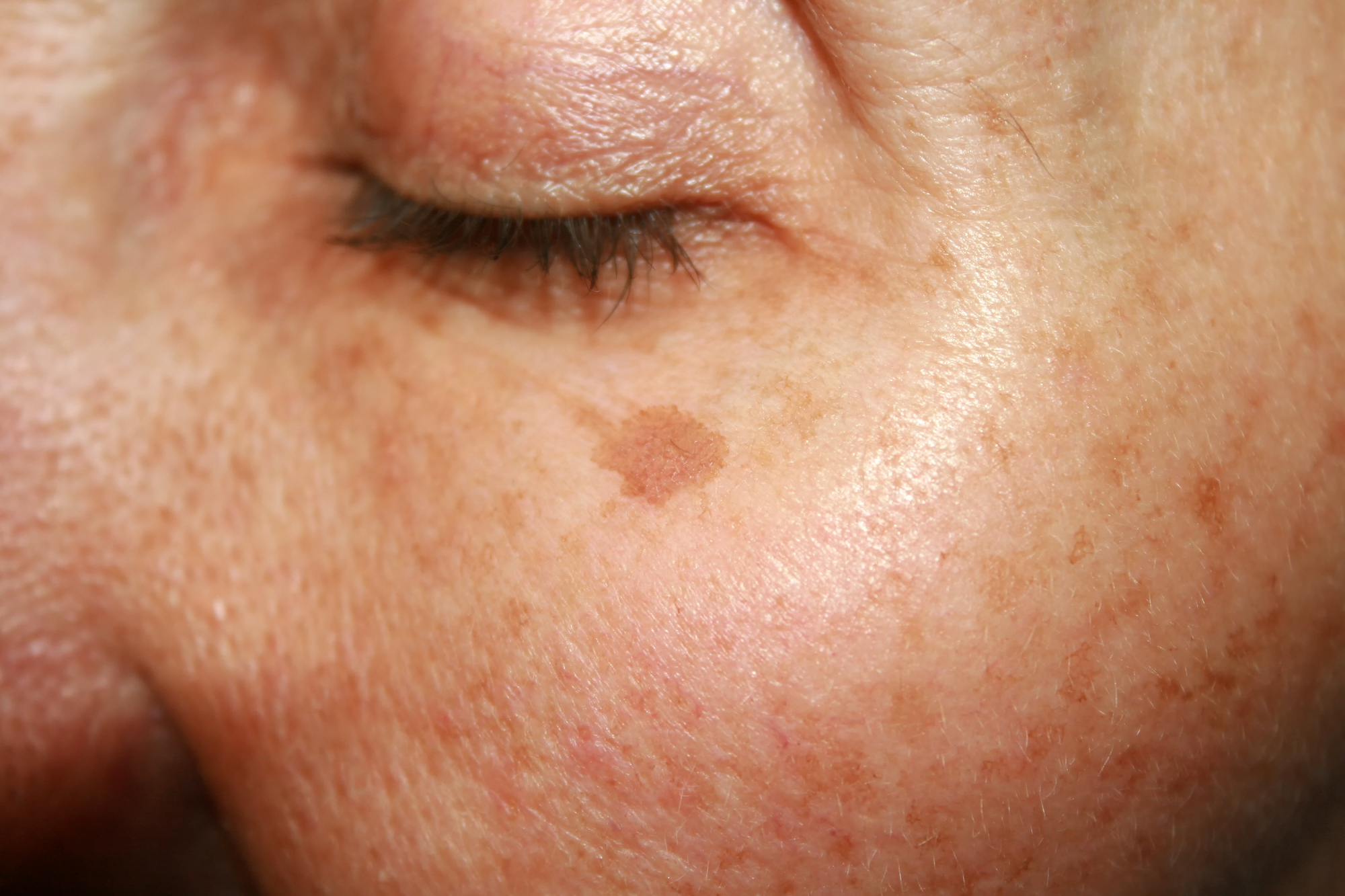Laser light treatment is a flash, similar to a camera flash. The frequency of that light is best absorbed by the dark pigmented spots in the skin. The surrounding light skin, which is not pigmented, does not pick up that light very well, so the dark pigmented cells absorb virtually all of the light’s energy and simply peel off after a few days.
The laser treatment itself takes approximately 30-minutes and is mildly uncomfortable. The sensation you feel is similar to a rubber band snapping on your skin. One treatment is often enough to be effective, but some people may want to do as many as three treatments depending on the level of sun damage.
It’s not uncommon for people to have brown spots on their hands, arms or face. The pigment is consistent and you usually can’t feel them because they’re flat, not raised.
These brown spots are often referred to as age spots, liver spots or sun spots. In medical terms, these brown spots are known as lentigines, which are basically sun spots caused by damage to the skin. Lentigines tend to make our skin look weathered, old and unsightly.
The Cost of Laser Treatment
The cost varies depending on the areas involved and the number of treatments you need. Larger areas of skin cost more, while smaller areas won’t be as expensive. Also, more treatments come with discounts. So your price per treatment decreases as you schedule more procedures.
Types of Laser Treatments
Laser treatment for dark spots uses an Intense Pulse Light (IPL) laser. The laser head (about the size of a postage stamp) emits light that’s absorbed by dark skin cells. The darker the skin cell, the more energy it absorbs, killing that particular cell.
Then the dead skin cells move to the top of your skin and flake off. As they flake, you just peel off the dark spots.
The surrounding skin cells aren’t harmed. Because they don’t have the dark pigment, they don’t absorb the laser energy.
This treatment works great for lighter skin types. Because the laser can clearly differentiate between the normal skin and the dark spot, it’s highly effective.
Chemical peels can help erase dark spots as well. If you have a darker skin, you may opt for a chemical peel instead of a laser treatment because it’s safer for skin with more pigment.
Do Lasers Hurt?
IPL can be uncomfortable. It feels like a little rubber band snap, and since it’s repeatedly “snapping” around the entire area of treatment, we recommend a numbing cream. You’ll apply it on the treatment area to make your procedure much more comfortable.
What to Expect After Laser Treatment
Redness and swelling are normal the day after your laser treatment. Then, within 4-7 days, these spots will begin to flake off like coffee grounds.
Whether you choose IPL or a chemical peel, dark spots will come back in the sun. Be meticulous about wearing sunscreen to prevent them from returning, especially in the weeks following your treatment. Even if you’re just driving on a sunny day, apply sunscreen. Your windshield doesn’t stop the sunlight from affecting your skin.
If you’re not careful about sun exposure, the effort you made to remove the spots will be in vain. They’ll only stay away with diligent sun protection.
Are Dark Spots Cancerous?
If you have dark spots, that doesn’t mean you have cancer. However, because these areas of the skin are damaged, you could develop skin cancer. It’s important to get checked (See: How to Spot Skin Cancer) if you notice a new brown spot that is changing and has a different color and shape from other moles on your body.
To the untrained eye, most moles and dark spots look similar, so we encourage everyone to get checked the first time they notice dark spots. It can take a long time to realize something is wrong, and early detection is critical. Also, you shouldn’t try to self-diagnose based on photos and information you found online. It’s important to be examined by a trained dermatologist.
The Consequences of Leaving Dark Spots Untreated
When left untreated, dark pigmented spots will continue to accumulate on your skin over time. The more you allow brown spots to accumulate, the more difficult they are to treat.
If you get brown spots cleaned off your skin at this time of year, they’ll typically stay away during the winter months because you spend less time in the sun. Then you can take steps during the spring and summer months to prevent these spots from appearing.
Ongoing Treatment to Prevent Dark Spots
In addition to the laser removal process, brown spots on the skin typically require ongoing, daily treatment because the damage is generally caused by daily sun exposure.
Obviously, it’s important to use sunscreen. We also use retinol to remove brown spots from the skin, as well as pigment blockers to prevent more dark pigment from appearing. This is all part of a daily regimen that can help you maintain a clear complexion.

Dr. R. Todd Plott is a board-certified dermatologist in Coppell, Keller, and Saginaw, TX. His specialization and professional interests include treating patients suffering with acne, identifying and solving complex skin conditions such as psoriasis, rosacea, atopic dermatitis, and identifying and treating all types of skin cancers. In his spare time, Dr. Plott enjoys cycling, traveling with his wife, and spending time with his children and new grandson.
Learn more about Dr. Plott.

